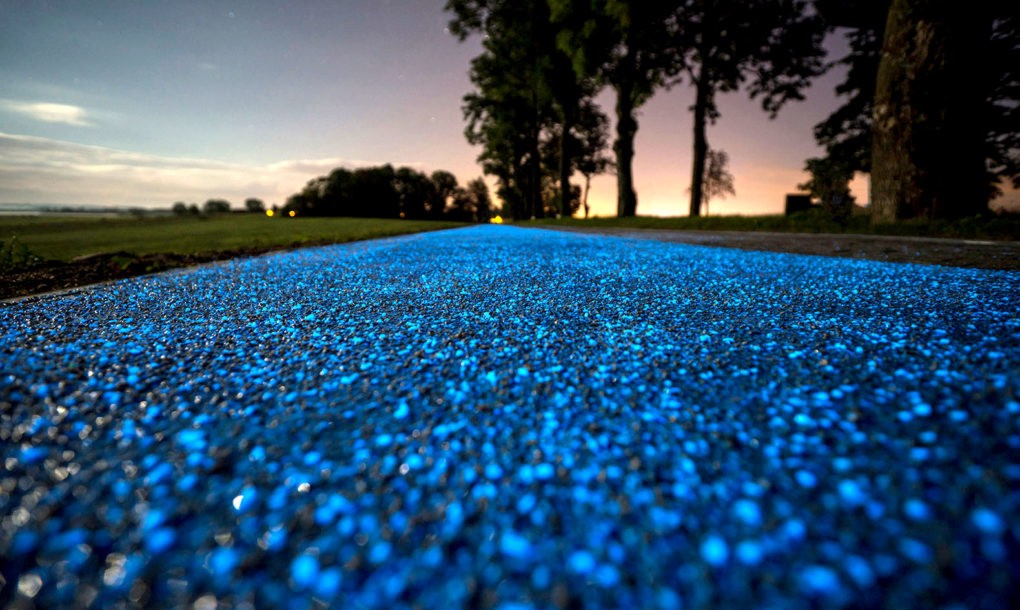
In the picturesque Polish town of Lidzbark Warminski, innovation meets aesthetics as they unveil a groundbreaking addition to their infrastructure – a glow-in-the-dark bike lane. This luminescent wonder, completed on September 28, is crafted from a special material harnessing phosphors, akin to the synthetic components found in glow-sticks and various other glow-in-the-dark products. What makes it truly remarkable is its ability to be charged by the sun.

Phosphors, when exposed to specific types of radiation, including sunlight, store this energy and then gradually emit it as visible light over an extended period. These radiant materials can manifest in an array of colors, yet Lidzbark Warminski opted for an enchanting blue hue, harmonizing with the nearby lakes, as reported by CityLab.
The construction company Strabag, responsible for the installation, highlights that these phosphors can retain their luminosity for up to 10 hours and conveniently recharge during the day. The bike lane, spanning 330 feet, is thoughtfully divided into two sections, each spanning 6 feet in width. One side caters to cyclists, while the other is designated for pedestrians. This visionary project, although pioneering, incurred a cost of $31,000 for the town.

The inspiration for this radiant road was drawn from a similar glow-in-the-dark lane in Eindhoven, Netherlands, constructed in 2014, known as the “Van Gogh-Roosegaarde” cycle avenue, inspired by the iconic painting, “The Starry Night.” However, the novel aspect of Lidzbark Warminski’s lane is its self-sufficiency, solely reliant on the sun for its radiant allure.
A spokesperson from TPA Instytut Badan Technicznych, the company behind the development of the phosphor material, stated that they intend to closely monitor the lane’s performance under various weather conditions and temperatures before considering replication in other installations.

This ingenious use of glowing phosphors not only enhances visibility, promoting cyclist safety by alerting pedestrians and motorists alike but also holds the potential to inspire more individuals to embrace cycling. Research has consistently shown that the introduction of bike lanes significantly improves public health by encouraging physical activity. This, in turn, can be associated with reduced instances of heart disease, all while being a cost-effective alternative to direct health treatments.

The Lidzbark Warminski glow-in-the-dark bike lane represents a brilliant amalgamation of innovation, safety, and aesthetics, illuminating a path towards healthier and more sustainable communities.

Leave a Reply